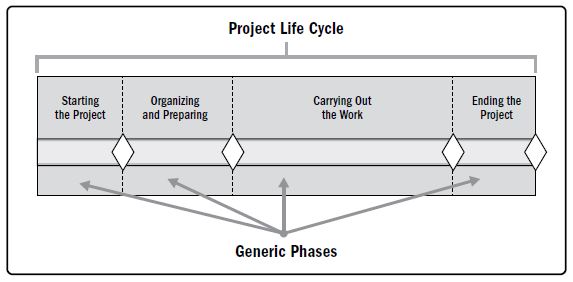A project life cycle is the series of phases that a project passes through from its start to its completion.
A project phase is a collection of logically related project activities that culminates in the completion of one or more deliverables. The phases can be sequential, iterative, or overlapping. The names, number, and duration of the project phases are determined by the management and control needs of the organization(s) involved in the project, the nature of the project itself, and its area of application.
Phases are time-bound, with a start and end or control point (sometimes referred to as a phase review, phase gate, control gate, or other similar terms). At the control point, the project charter and business documents are reexamined based on the current environment. At that time, the project’s performance is compared to the project management plan to determine if the project should be changed, terminated, or continue as planned.
The project life cycle can be influenced by the unique aspects of the organization, industry, development method, or technology employed. While every project has a start and end, the specific deliverables and work that take place vary widely depending on the project. The life cycle provides the basic framework for managing the project, regardless of the specific work involved.
Though projects vary in size and the amount of complexity they contain, a typical project can be mapped to the following project life cycle structure (see Figure 1-2):
- Starting the project
- Organizing and preparing
- Carrying out the work, and
- Closing the project.
 |
| Figure 1-2. Generic Depiction of a Project Life Cycle
A generic life cycle structure typically displays the following characteristics:
Figure 1-3. Impact of Variables Over Time
|
Project Lifecycle from Agile Practice Guide, This video is based on PMBOK® Guide Sixth Edition and Agile Practice Guide.
Reference: PMBOK 6 Edition


Post a Comment